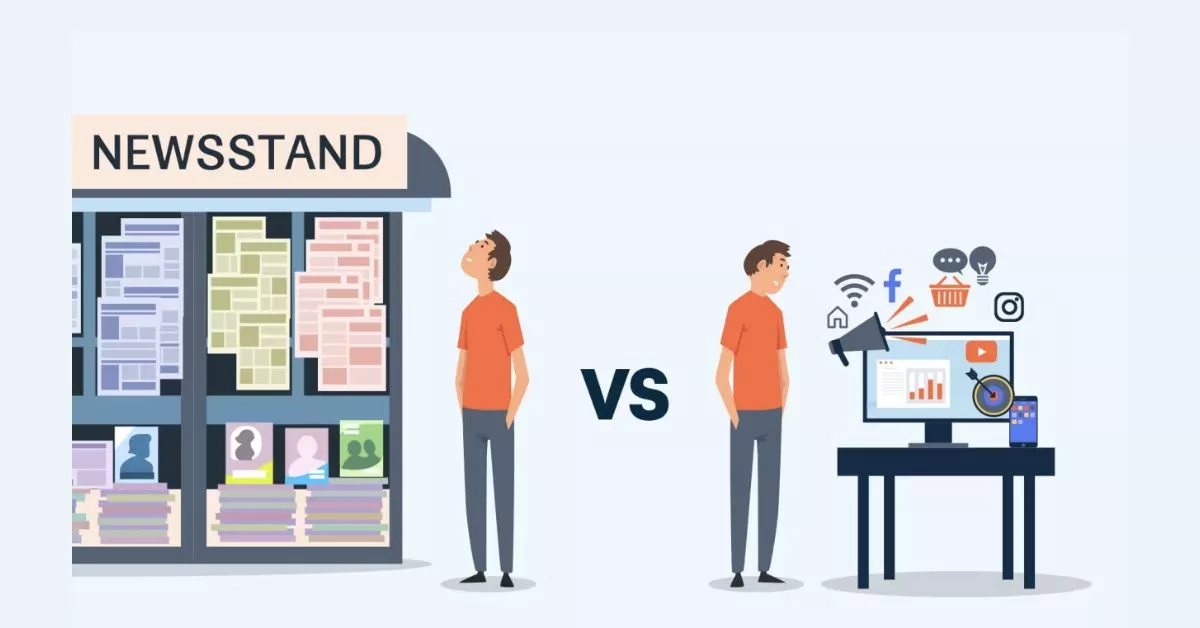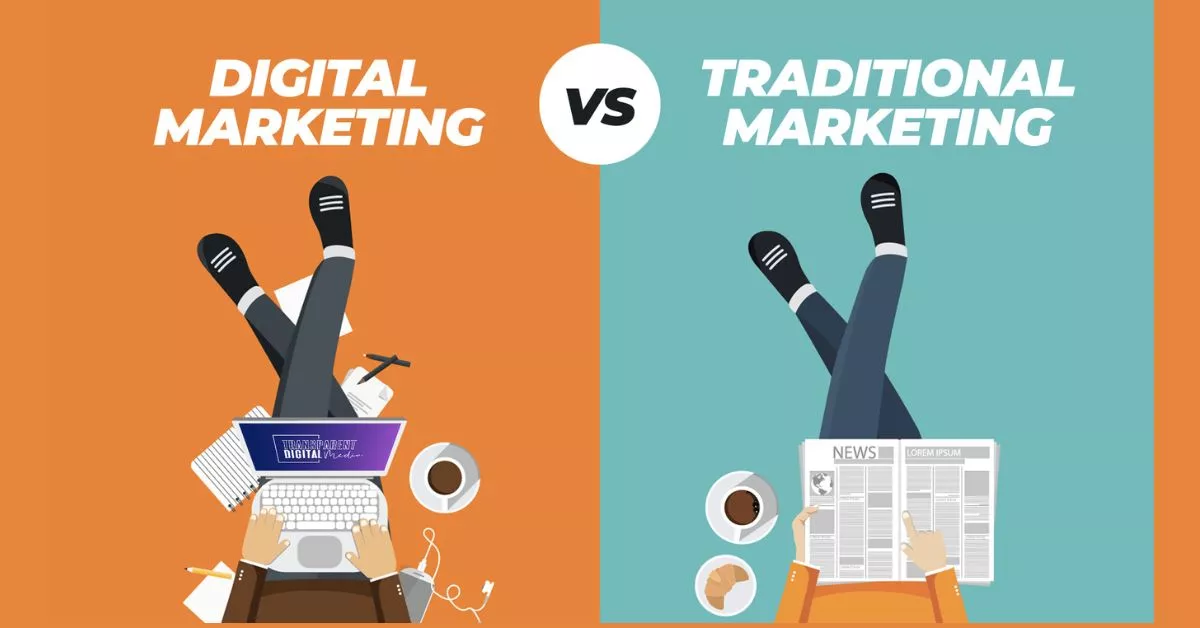In today’s fast-paced business landscape, the battle between traditional marketing and digital marketing continues to evolve. Each approach has its own set of strengths and weaknesses, making it crucial for businesses to understand the nuances of both.
In this article, we will delve deep into the world of marketing, comparing traditional methods with their digital counterparts, and shedding light on their effectiveness, reach, and impact.

Traditional Marketing: The Time-Tested Approach
Traditional marketing encompasses conventional methods such as print advertisements, billboards, radio and television commercials, direct mail, and telemarketing. These methods have been the backbone of marketing for decades and have proven their effectiveness in reaching a wide audience.
Advantages of Traditional Marketing:
- Tangible Presence: Physical ads create a tangible presence, leaving a lasting impression on the audience.
- Localized Targeting: Billboards, local TV, and radio ads allow businesses to target specific geographic areas effectively.
- Trust and Credibility: Traditional methods often establish trust, especially in older demographics, who are more accustomed to these formats.
Challenges of Traditional Marketing:
- Limited Analytics: Tracking ROI can be challenging, with limited insights into customer engagement.
- Higher Costs: Production and distribution costs for traditional methods are usually higher compared to digital marketing.
- Less Interactive: Traditional marketing lacks the interactivity and engagement offered by digital platforms.
Also read- Refocusing on a Single Digital Marketing Channel: A Path to Remarkable Success.
Digital Marketing: The Power of Online Presence
Digital marketing, on the other hand, encompasses a wide array of strategies such as social media marketing, content marketing, email marketing, search engine optimization (SEO), pay-per-click (PPC) advertising, and influencer marketing. These methods leverage the internet and digital platforms to engage with audiences.
Advantages of Digital Marketing:
- Global Reach: Digital marketing allows businesses to reach a global audience, breaking the barriers of geography.
- Cost-Effectiveness: Digital strategies often have lower entry costs and can be tailored to fit various budgets.
- Targeted Marketing: Through data analytics, businesses can precisely target their audience, ensuring higher conversion rates.
- Real-Time Analytics: Comprehensive data analytics provide real-time insights, enabling businesses to adjust strategies on the go.
Challenges of Digital Marketing:
- Saturation: The digital space is crowded, making it challenging to stand out amidst the competition.
- Technological Barriers: Access to technology and digital literacy can limit the reach of digital marketing in certain demographics.
Choosing the Right Mix:
In today’s dynamic marketing landscape, the key lies in finding the right balance between traditional and digital marketing. While traditional methods offer a sense of credibility and trust, digital marketing provides unparalleled reach and measurable results. The ideal strategy often involves integrating both approaches, creating a holistic marketing campaign that caters to diverse audience segments.
Must read-
- Embracing Generative AI: A Positive Shift for Digital Marketers.
- How AI is Changing the Game for Digital Marketing?
Which type of marketing is better?
The best type of marketing for your business will depend on your specific goals and target audience. If you are looking to reach a large audience, traditional marketing may be a good option. However, if you are looking to target a specific audience or measure the effectiveness of your campaigns, digital marketing may be a better option.
Tips for using traditional marketing and digital marketing effectively:
Traditional marketing
- Use a variety of channels: Don’t rely on just one traditional marketing channel. Use a variety of channels to reach your target audience.
- Target your audience: Even though traditional marketing can reach a large audience, it is still important to target your campaigns to specific demographics.
- Make your ads creative: Your ads should be creative and attention-grabbing in order to stand out from the competition.
- Measure your results: It may be difficult to measure the effectiveness of traditional marketing campaigns, but it is still important to try to do so. You can use surveys and other methods to measure the impact of your campaigns.
Digital marketing
- Create high-quality content: Your digital marketing content should be high-quality and informative. This will help you to attract and engage your target audience.
- Use social media: Social media is a great way to reach and connect with your target audience. Be sure to use social media platforms that your target audience is active on.
- Use email marketing: Email marketing is a great way to stay in touch with your customers and promote your products or services. Be sure to send regular emails that are relevant to your audience.
- Measure your results: It is easy to measure the effectiveness of digital marketing campaigns using web analytics and other tools. Be sure to track your results and make adjustments to your campaigns as needed.
By following these tips, you can use traditional marketing and digital marketing effectively to reach your target audience and achieve your business goals.

In conclusion, the battle between traditional marketing and digital marketing is not about choosing one over the other but understanding the strengths of each and integrating them strategically. By combining the best of both worlds, businesses can create a robust marketing strategy that maximizes their impact and delivers tangible results.
